Does Curd Contain Vitamin C
How to make the easiest homemade Lemon Curd with just four simple ingredients. It's sweet, tart, smooth and creamy, and can be used in so many ways from filling cakes, tarts, scones and so much more!
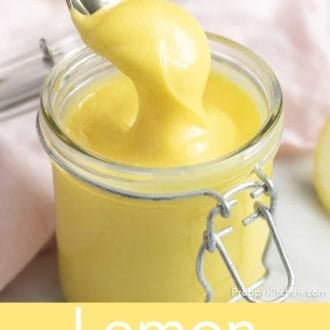
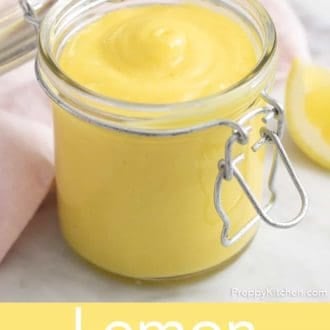
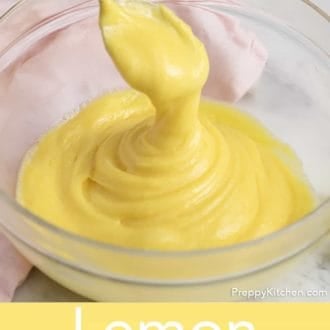


Lemon curd is one of the easiest things to make, it's a thick spread made from fresh lemons, sugar, eggs, and butter. It's smooth, and creamy in texture with a bright, sweet, and zingy flavor perfect for using in desserts or simply spreading on toast for breakfast.
Once you make this easy homemade version I guarantee you'll never be tempted to pick up a jar at the store again because it doesn't taste nearly as delicious! The secret to making the best lemon curd? Adding in cold butter at the end. It gives the curd the most delicious silky soft texture and thickens it beautifully.
Use it to make the most incredible Lemon Meringue Pie, zesty Lemon Bars, or beat it into buttercream to top or fill cakes or cupcakes. See my full recipe tutorial below that shows you all the ingredients you need including some important notes on substitutions, step by step photos and video, and all the tips you need to make the very best homemade lemon curd from scratch!
What you need to make this recipe
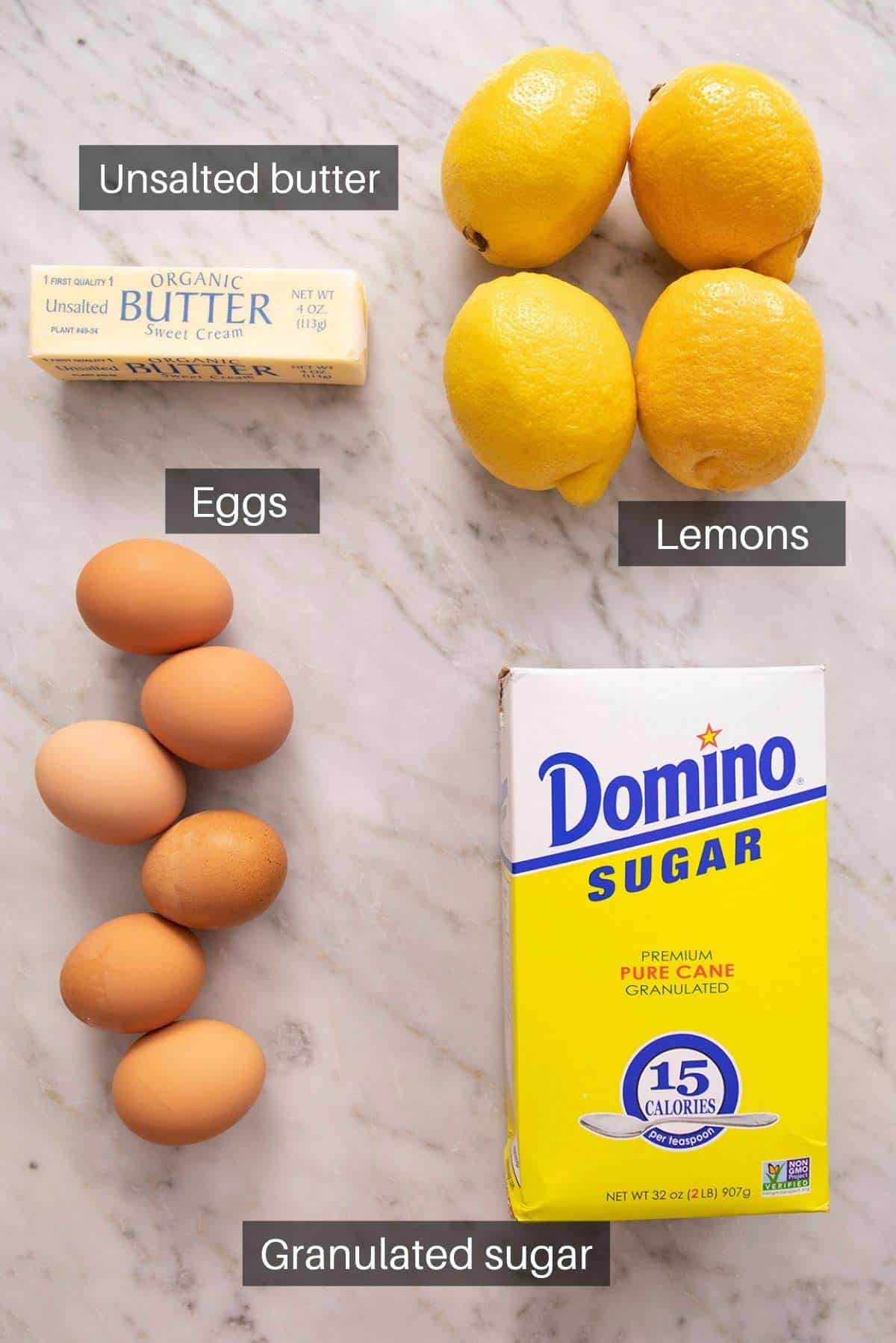
Lemons – use good quality fresh lemon for best results, you'll need to use the zest and juice for that extra zingy and citrusy flavor.
Egg yolks – you only need the egg yolks which is used to thicken the curd. Separate the whites and freeze them for a later use like making Swiss Meringue Buttercream or an Angel Food Cake.
Butter – butter also helps thicken the curd and gives it a delicious creamy and decadent flavor. Make sure to use unsalted butter and I like to keep it cold before adding so it thickens the curd quickly.
Sugar – use white granulated sugar, don't use brown sugar or it'll change both the flavor and color of the curd.
How to make Lemon Curd
1. Add the egg yolks to a bowl (freeze the whites for another use).
2. Zest two lemons which will yield about two tablespoons.
3. Add the sugar and zest to a food processor and pulse until the zest is totally incorporated and your sugar is fragrant and light yellow in color. This step is optional but it really takes that lemon flavor up a notch.
4. Juice your lemons until you have about 1/2 a cup, strain to remove any pips and pulp.
5. Strain the yolks into the pot to remove any non yolk parts of the egg (optional but recommended).
6. Add the sugar to the eggs.
7. Whisk the sugar and yolks until you have a nice light color, this helps dissolve the sugar.
8. Slowly whisk in the lemon juice and mix until incorporated.
9. Place on a low heat and whisk until you see the curd noticeably thicken and just start to bubble.
10. When the curd is thick enough you should be able to draw a line on the back of a wooden spoon with your finger and it holds.
11. Remove the Pot from heat, add the cold butter and stir in until melted and incorporated.
12. Strain the curd straight into a bowl or jar and place a sheet of plastic wrap directly on top of the curd to prevent a skin from forming as it cools. Chill until ready to use.
Pro tips for making this recipe
- The most important tip for flavor is to use fresh lemon juice that's been freshly squeezed. Don't be tempted to use bottled lemon juice of any kind as it'll be far too acidic and will ruin the flavor.
- You'll know the curd is ready when it noticeably thickens in consistency and coats the back of a wooden spoon.
- Keep the heat low, don't turn it up to quicken the process or the eggs will scramble.
- Don't stop whisking the curd until it's off of the heat or the eggs will scramble and turn lumpy.
- If you don't have a very low setting on your stove it's best to use a double boiler so you don't overcook the eggs.
- Once transferred to a bowl or jar place a piece of plastic wrap directly on top of the curd as it cools so a skin doesn't form.
- The lemon curd will thicken as it cools it's really important to cool it completely before using it to fill cakes or it won't be the right consistency.
- Cold butter will help cool the curd and set it more quickly.
- The curd will set completely in the fridge.
Frequently Asked Questions
Do I need to use lemon zest?
No, you don't have to but I highly recommend it because the zest contains the natural oils from the lemon so adds a ton of extra flavor.
My lemon curd won't thicken, what can I do?
If your curd seems too thin after cooling (pourable like a sauce) then you can thicken it by adding in a cornstarch slurry (1 tbsp of cornstarch mixed with 3 tbsp water). Mix it in and heat the curd, stirring until it thickens. Remember that the curd will thicken more once cooled.
My curd is lumpy, what do I do?
If you have lumps in your lemon curd it's most likely pieces of overcooked egg. Pass the curd through a sieve to remove the zest and lumps but if it's still lumpy give it a quick blend with a regular blender or immersion (handheld) blender until smooth.
What the best way to serve it?
There are so many ways you can serve lemon curd whether it's used as a cake or cupcake filling, spread on scones, beaten into whipped cream, or frosting to fill all kinds of cakes and pastries. You can even simply spread it on toast for breakfast with a cup of coffee the list is endless.
Do I need to strain it?
Straining the lemon curd is an optional step but it's one that I recommend because it removes the lemon zest and any extra egg pieces making the curd extra silky smooth and delicious. To strain the curd, press it gently through a sieve into a bowl, this will leave the zest and any lumps behind giving you an extra smooth curd to enjoy.
How long does it last, can it be frozen?
Lemon curd will keep in the refrigerator for up to a week or in the freezer for up to three months. After freezing, thaw it in the fridge overnight before using.
If you've tried this Lemon Curd Recipe then don't forget to leave a rating and let me know how you got on in the comments below, I love hearing from you!
Lemon Curd
The easiest homemade Lemon Curd that's creamy, sweet and zingy. Don't forget to check out my step by step photos and tips above.
Course Dessert
Cuisine American
Prep Time 15 minutes
Cook Time 10 minutes
cooling time 2 hours
Total Time 2 hours 25 minutes
Servings 10 oz
Calories 197 kcal
- 1 cup granulated sugar (200g)
- 2 tbsp lemon zest zest of two lemons
- 6 egg yolks
- 1/2 cup lemon juice minus one tablespoon, (100mL)
- 1/2 cup butter unsalted, cold
-
Separate the yolks from the whites. You can freeze the egg whites for later or make a Swiss meringue buttercream with them!
-
Zest the lemons. If you have a food processor handy I like to pulse the lemon zest and sugar together to really extract all the oils from them but this step is not a must.
-
Juice the lemons until you have about half a cup of lemon juice. Don't forget to strain out the seeds.
-
Strain egg yolks into a pot and beat lightly with a wire whisk. Whisk in the sugar and give it a good mix until lighter in color. Stir in lemon juice gradually.
-
Heat on low, while stirring constantly with a wire whisk until mixture thickens, just starts to bubble and coats back of wooden spoon.
-
Remove pot from heat, then add the cold, cubed butter and mix until melted.
-
This is optional but I like to strain the final mixture to remove any bits of zest, etc. The final curd will be SILKY SMOOTH and amazing.
-
Transfer the curd to a sealable container or bowl. If string in a bowl make sure to cover the surface with plastic wrap to prevent a skin from forming.
- The most important tip for flavor is to use fresh lemon juice that's been freshly squeezed. Don't be tempted to use bottled lemon juice of any kind as it'll be far too acidic and will ruin the flavor.
- You'll know the curd is ready when it noticeably thickens in consistency and coats the back of a wooden spoon.
- Don't stop whisking the curd until it's off of the heat or the eggs will scramble and turn lumpy.
- Keep the heat low, don't turn it up to quicken the process or the eggs will scramble.
- If you don't have a very low setting on your stove it's best to use a double boiler so you don't overcook the eggs.
- Once transferred to a bowl or jar place a piece of plastic wrap directly on top of the curd as it cools so a skin doesn't form.
- The lemon curd will thicken as it cools it's really important to cool it completely before using it to fill cakes or it won't be the right consistency.
- Cold butter will help cool the curd and set it more quickly.
- The curd will set completely in the fridge.
- Storage - the lemon curd will keep in the fridge for 1 week or can be frozen for up to 3 months.
Serving: 1 oz | Calories: 197 kcal | Carbohydrates: 21 g | Protein: 2 g | Fat: 12 g | Saturated Fat: 7 g | Cholesterol: 142 mg | Sodium: 87 mg | Potassium: 24 mg | Fiber: 1 g | Sugar: 20 g | Vitamin A: 439 IU | Vitamin C: 6 mg | Calcium: 18 mg | Iron: 1 mg
*Nutrition Disclaimer
Source: https://preppykitchen.com/lemon-curd/






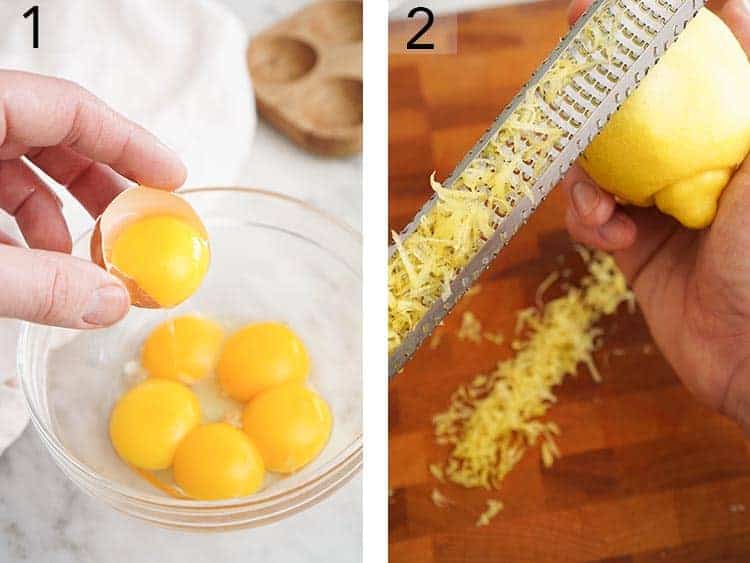
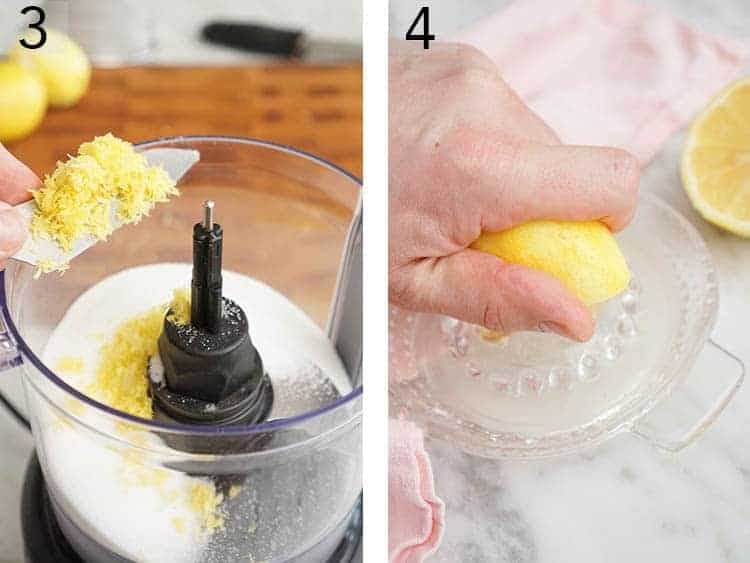
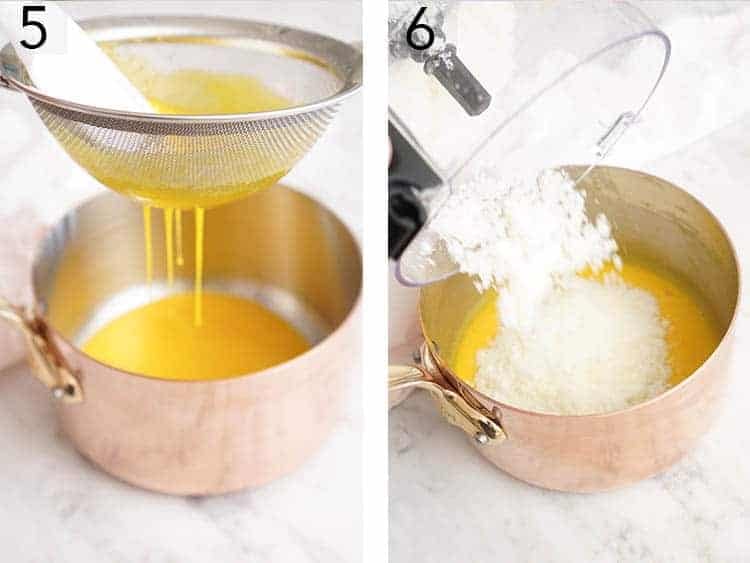
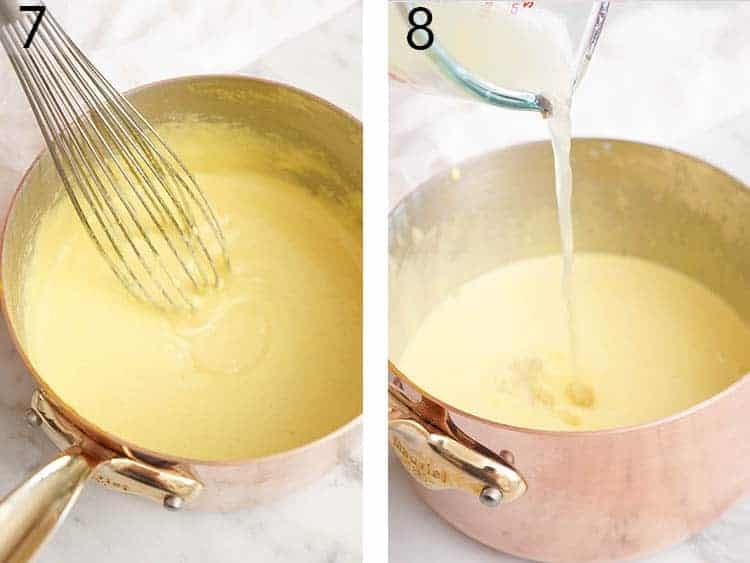
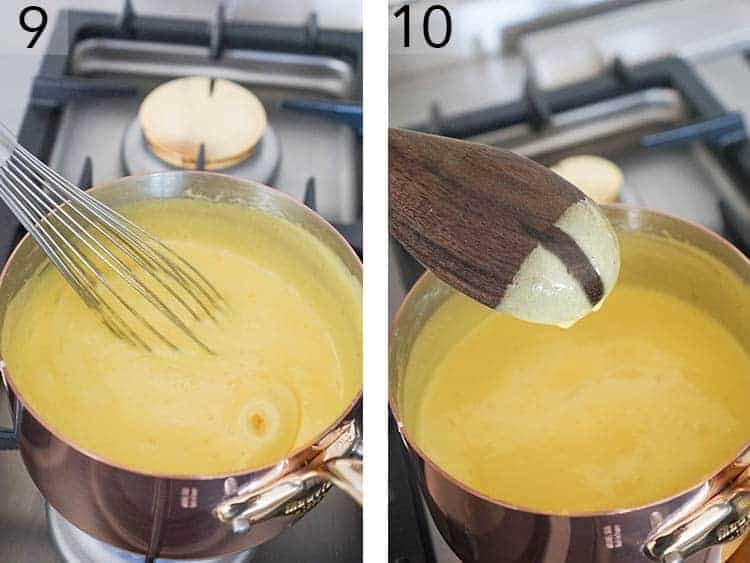
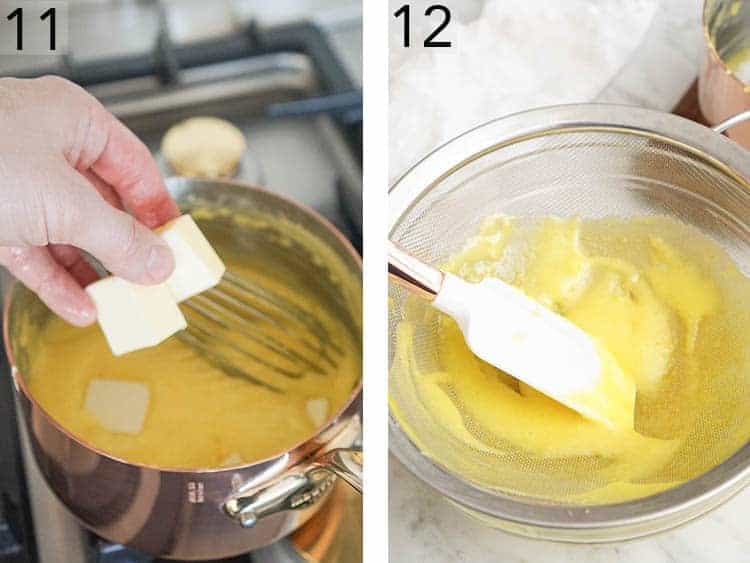
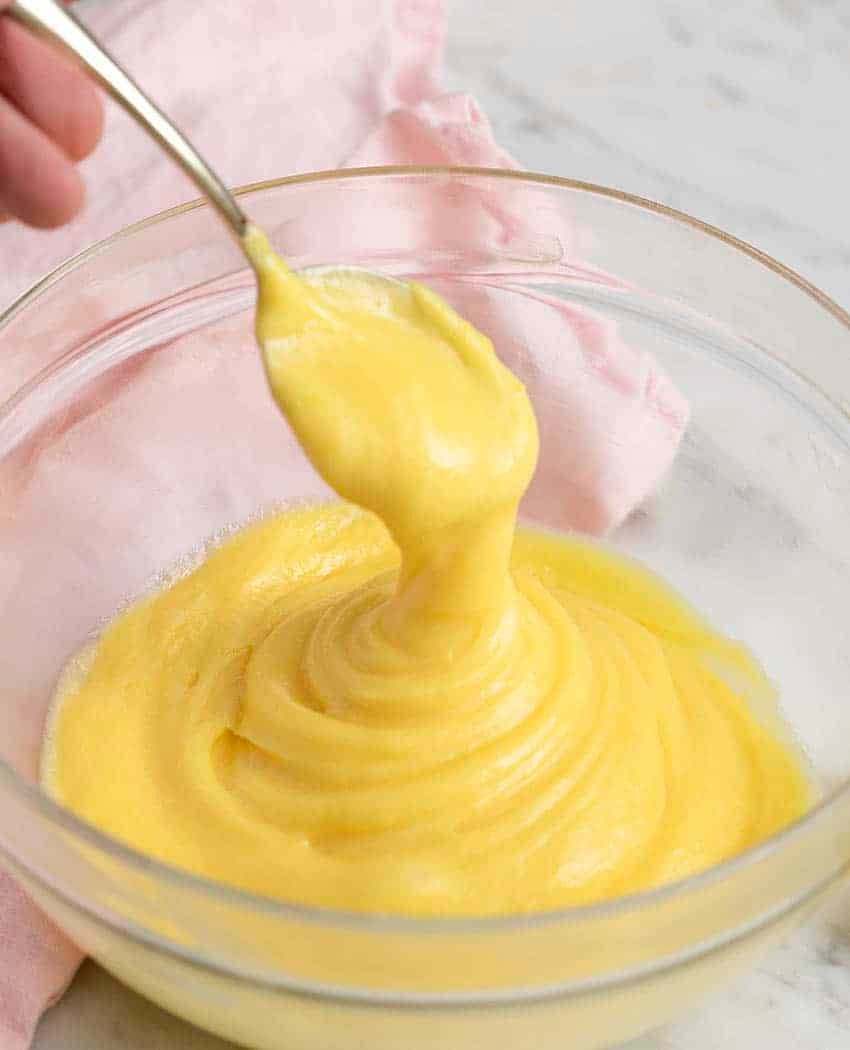
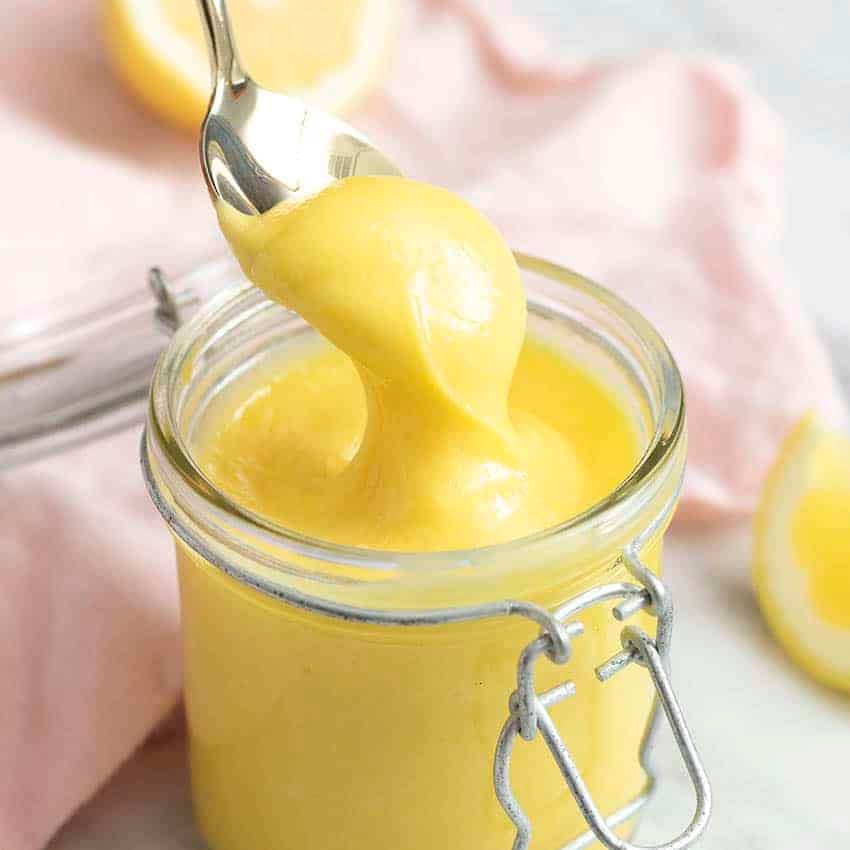

Tidak ada komentar:
Posting Komentar